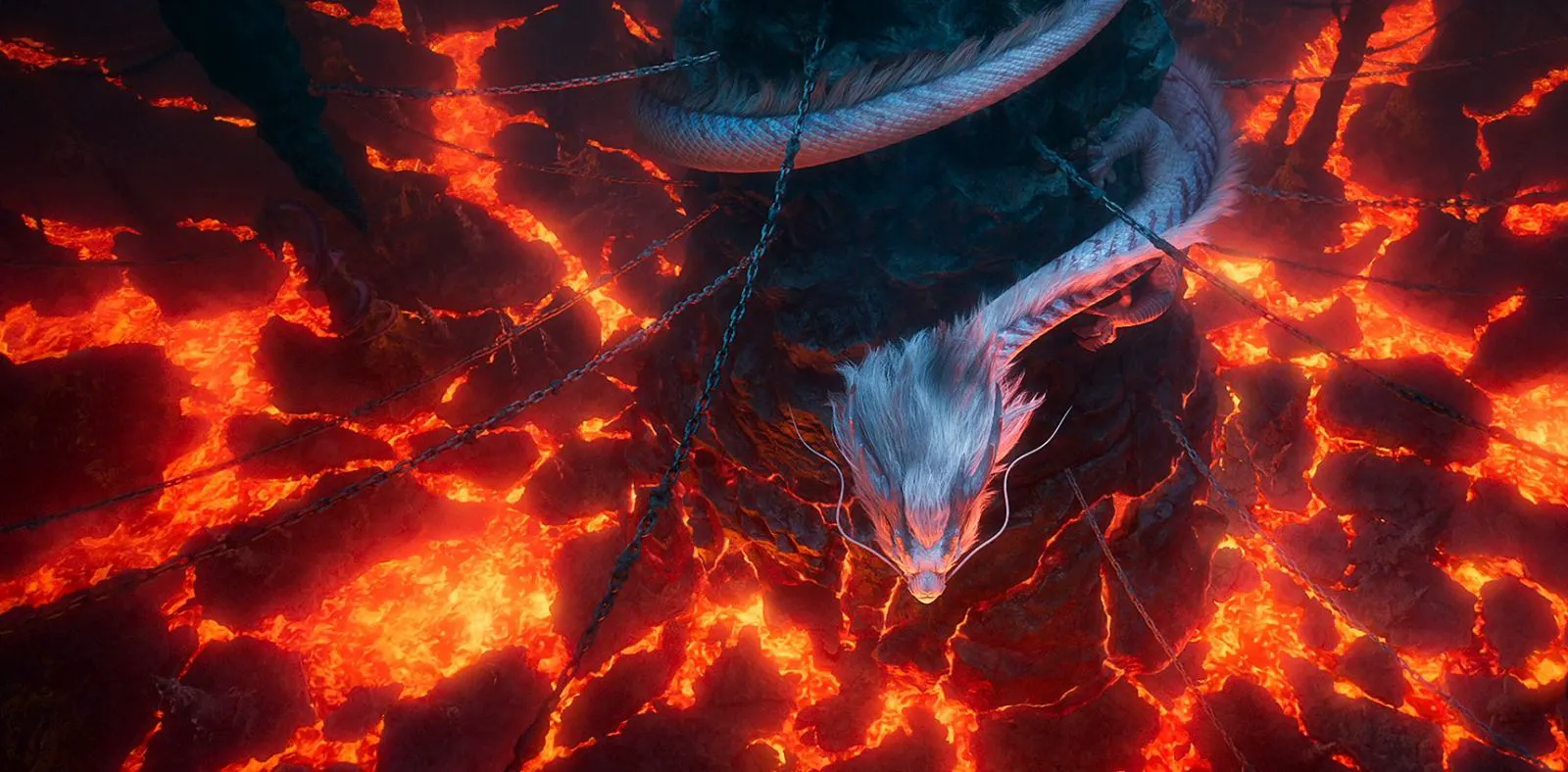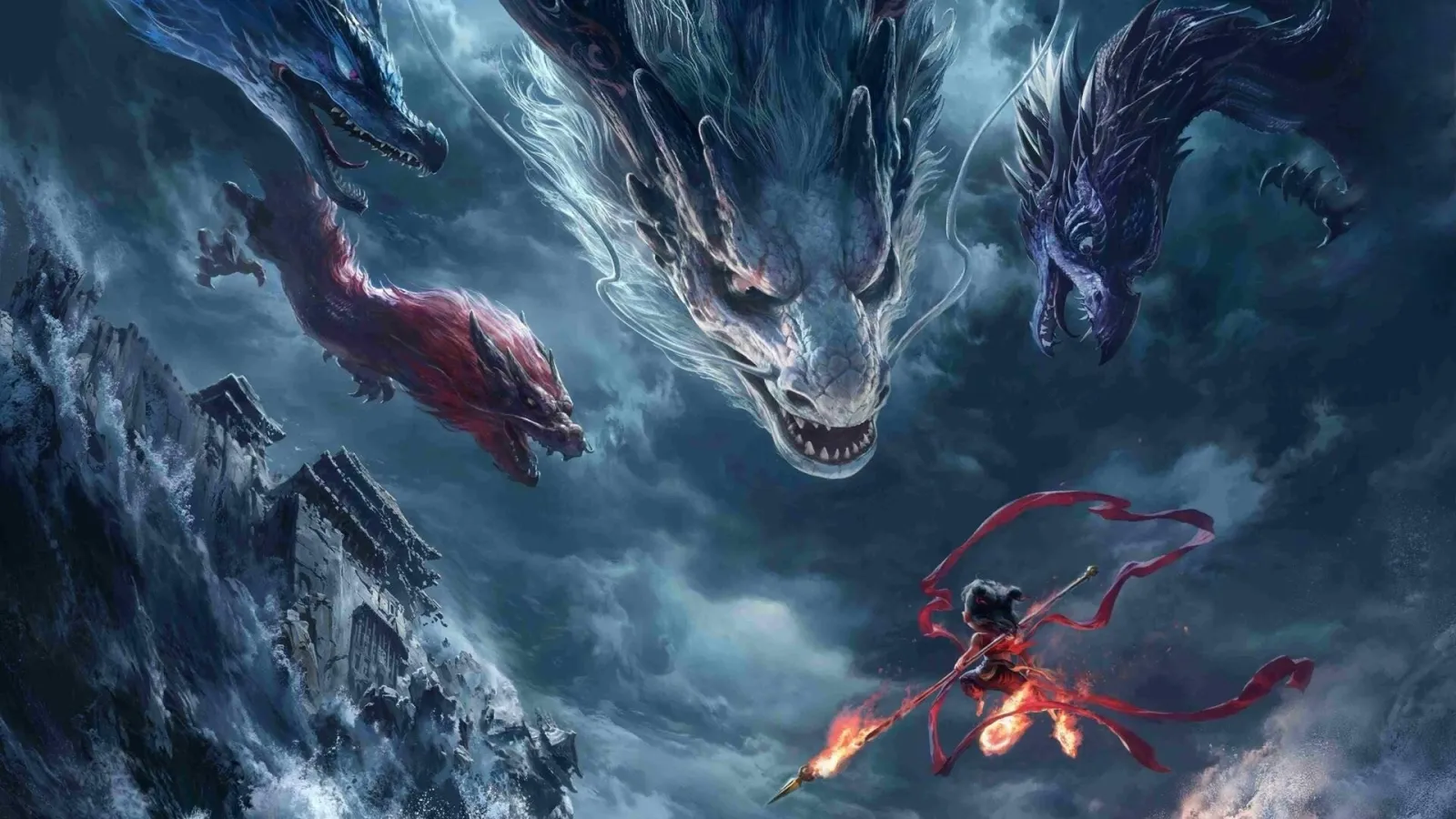While Western animation has been dissecting Pixar characters in therapy sessions and transforming Disney princesses into corporate icons, China has been quietly accumulating ideas and technology. In 2019, the animated hit “Ne Zha” emerged from the Middle Kingdom, a story about a demon boy with noble aspirations. Despite a modest budget, the film grossed over $700 million and spawned a sequel. “Ne Zha Reborn” surprised even its creators, surpassing $2.2 billion at the box office and effortlessly outstripping Disney and Pixar projects to become the highest-grossing animated film in history. This grand tale by director Yang Yu boasts more than just financial success, and international audiences can now experience it firsthand.

Scene from “Ne Zha Reborn”
The Epic Tale of Ne Zha
The diptych (there’s little doubt that “Ne Zha” will become a franchise) is based on the 16th-century Chinese novel “Investiture of the Gods,” an epic of the Ming Dynasty where gods and demons are the main characters. Ne Zha (voiced by Liu Yanting), just one of many characters in the book, transforms into one of the two forces challenging the heavens themselves, where scheming immortals reside. Having rewritten his destiny in the first film, Ne Zha and his former adversary, now sworn friend Ao Bing (voiced by Han Mo), lose their physical forms. Their teacher, Taiyi Zhenren (voiced by Zhang Jiaming), fashions new bodies for them from lotus roots, but only Ne Zha manages to incarnate due to an attack on the city by an army of underwater demons.
To prevent Ao Bing’s spirit from dissolving, he must inhabit Ne Zha’s body. To create a new body for Ao Bing, Ne Zha and Taiyi Zhenren journey to the heavens, where the boy must pass trials to earn the rank of immortal and obtain the elixir of life—the only means to create a new body for Ao Bing. Thus, “Ne Zha Reborn” becomes a classic Hero’s Journey, infused with elements of traditional Chinese mythology—an ancient poem brought to life through computer animation. The first major strength of the film lies in the creators’ modern approach to the classic narrative.

Scene from “Ne Zha Reborn”
A Modern Twist on a Classic
Ne Zha and his friends’ adventure unfolds with the same rhythm as the literary source material: slowly and solemnly. The filmmakers take their time, gradually introducing new characters who receive due attention. Behind the unhurried pace and numerous subplots lies a modern conflict: can one escape being a mere “tool” if almost everyone sees you as just a function—a son, a weapon, a protector, or a traitor? “Ne Zha Reborn” offers a comforting, albeit not painless, answer. It also incorporates contemporary gags, slightly goofy and fast-paced enough to diffuse the occasionally accumulating pathos.

Scene from “Ne Zha Reborn”
Visual Spectacle and Familiar Echoes
The second significant strength of “Ne Zha” is its stunning visuals. Dense clouds, shimmering water palaces, and architecture crafted with such attention to detail that every structure invites prolonged and detailed observation. The battles easily rival even the most ambitious CGI blockbusters. The Chinese filmmakers’ penchant for gigantism in battle scenes is well-established, but “Ne Zha Reborn” sets an unprecedented standard for the number of participants and the quality of their rendering. The final showdown unfolds over an endless ocean, where an entire dragon city has sunk. The scale of production was so vast that 138 companies were involved in the film’s creation.
However, discerning viewers may notice familiar elements in “Ne Zha.” It would be unfair to say that the creators borrowed from the vast pop-cultural landscape—after all, the film’s plot and characters are centuries old. Nevertheless, it’s hard not to see the resemblance between the mischievous and comical Ne Zha and the main pirate of the millennial generation from the iconic anime One Piece. The influence of Japanese animation is evident: battles are divided into phases, with villains revealing new abilities in each, and heroes, on the verge of defeat, overcome pain and expand their powers to incredible limits. Yet, it’s impossible to call “Ne Zha” derivative, and it’s inappropriate to accuse a fairly original project of plagiarism.
A Bold Step Forward
“Ne Zha Reborn” is not just a grand and worthy sequel but a genuine maturation of the nascent franchise. The film is bolder, fiercer, and smarter than not only its predecessor but also most contemporary animated films. Despite its national flavor and predominantly Chinese narrative, “Ne Zha” combines local myth with universal themes: the importance of fighting for one’s place in the sun, opposing the old order, and striving for the future, even when the heavens are against you.